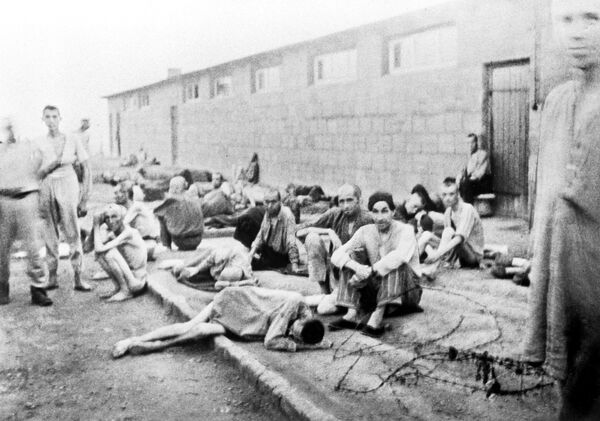Wednesday marks the 75th anniversary of the liberation of Mauthausen, the Nazi concentration camp in upper Austria freed by American GIs between May 3 and 6, 1945.
Although it was not a facility designed solely for the purpose of systematically murdering its inmates, like Nazi camps further to the east in occupied Poland, Mauthausen was notorious for its incredibly high death rates, with many prisoners literally worked to death in its subcamps’ quarries, weapons factories, and mines, and subjected to unbearable cruelty from prison wardens.
After its establishment in 1938, Mauthausen’s initial stock of criminal inmates was quickly complemented by German and Austrian political prisoners, including socialist and communist agitators, as well as Czechoslovak and Polish prisoners, homosexuals and Gypsies. After Nazi Germany declared war on the Soviet Union in 1941, thousands of Soviet prisoners of war were imprisoned in the camp. Yugoslav soldiers were also among the prisoners, as were Jews from Hungary, the Netherlands, and other occupied territories.
Ilya Altman, cochairman of the Russian Holocaust Research and Education Center in Moscow, says that aside from its other purposes, Mauthausen was a profit-oriented concentration camp, with the Nazis cynically attempting to make money even from prisoners’ deaths.
“Relatives would receive cynical letters to the effect of: ‘Your son/husband/father was ill in hospital, received all possible forms of medical care, but, unfortunately, this did not help and he died. We express our sincere condolences to you. If you pay 0.72 marks, we can send you a certificate of his death,” the academic said in an interview.
Work at the camp network would begin at four or five in the morning, and last until seven or eight pm in the evening, with prisoners deemed too tired, weak or sick often sent to their deaths.

Block 20
“In the summer of 1944, a new special Block 20 was created at the camp, which prisoners immediately dubbed the ‘death block’. The isolated facility separate from the rest of the camp consisted exclusively of soldiers and officers from the Red Army. These were men who had proven themselves impossible to break, who in their previous detention camps put together secret groups and prepared escapes,” Altman said.
The prisoners of Block 20 were fed once every three days, kept in unheated barracks, and subjected to gruelling physical exercise in addition to their work. Block 20 was also used to train SS guards, who ‘learned their trade’ by torturing and killing prisoners.

Daring Escape
“The conditions in the death block were designed to kill the very idea of the possibility of resistance. However, in early 1945, its inmates prepared an uprising. On the night of February 2, 1945, prisoners from the block escaped, with their uprising going down in history as the largest of its kind during the Second World War,” Altman recalled.
During the uprising, emaciated prisoners divided up into several groups, attacking the camp’s machine gun towers with fire extinguishers, fragments of a broken washbasin, cobblestones, bits of coal and wooden blocks. Prisoners weighed down a barbed wire fence with wooden boards, covered it with rags and climbed over it to freedom. During the uprising, some 80 prisoners were killed, with 419 managing to escape.
Sadly, in the weeks that followed, most of the escapees were hunted down with the help of soldiers, local Nazi organizations, police and even some local residents, with only 11 officers managing to survive until the end of the war. Two of the men were hidden by the Langtalers, a couple whose five sons were sent to fight on the Eastern Front. The operation to hunt down the officers, named the ‘Muhlviertel Hasenjagd’, i.e. the ‘Muhlviertel Hare Hunt’, was later ruled a war crime.

On the night of May 2, the SS men operating the Mauthausen facility, sensing the imminent arrival of Allied troops, handed control of the facility to local police units and, donning civilian clothes, left. On May 5-6, US forces arrived, freeing the camp network.
All told, Mauthausen is believed to have imprisoned about 335,000 people throughout its operation, with 122,000 of them killed (among them over 32,000 Soviet nationals), and others transferred to other concentration or death camps or forced labour operations. By 1945, only about 80,000 prisoners were left alive.
Among the survivors was Lev Manevich, the famous Soviet intelligence officer who collected intelligence on fascist activities in Austria, Germany, Italy and Spain in the years running up to World War II. Captured by the Italian secret police in 1936, he continued to send Moscow valuable information for years to come from a prison cell. He was transferred to Mauthausen in 1943. Unfortunately, three days after the camp’s liberation, on Victory Day, Manevich died of tuberculosis complications. He was posthumously awarded the title of Hero of the Soviet Union in 1965.




